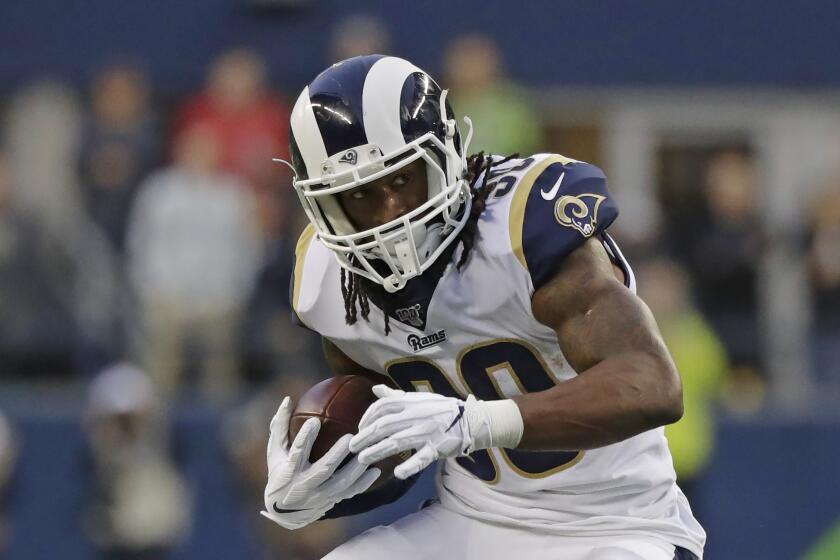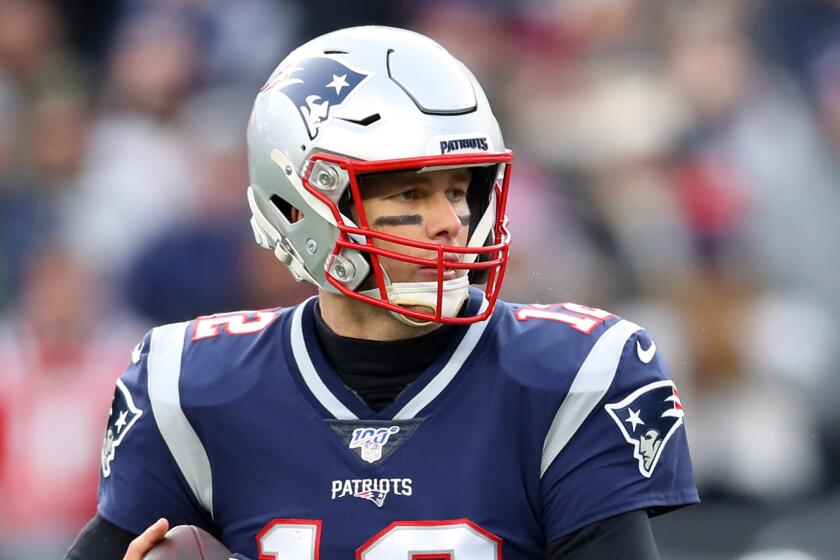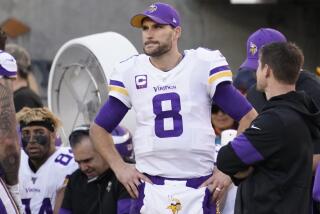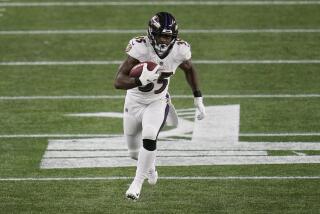Todd Gurley, Melvin Gordon discover NFL trend of running backs becoming less valued
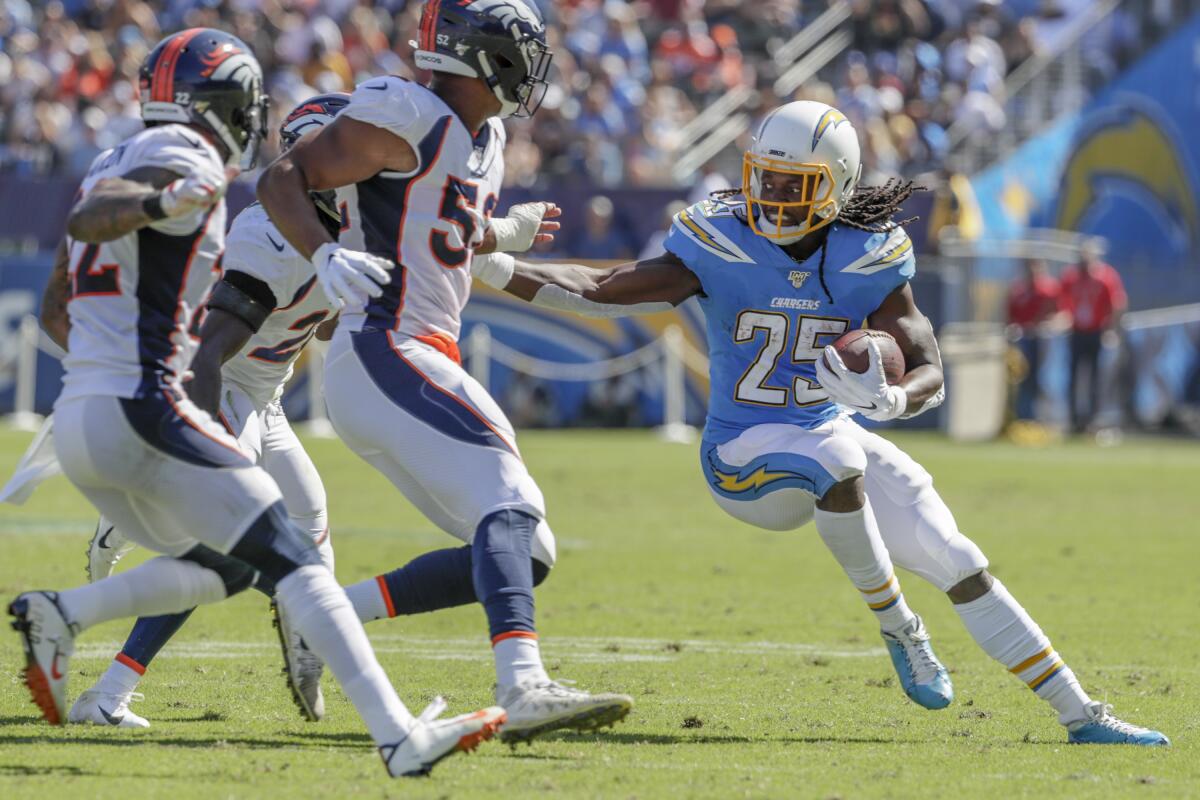
- Share via
He was feeling a lot of things — frustration, disappointment, uncertainty. But wanted? No, he wasn’t feeling that. Not at all.
“I wanna get something done,” said Melvin Gordon, a running back who had been without a team for which to run. “I’m tired of waiting.”
That was nearly 12 weeks ago.
Gordon, a 1,000-yard rusher in 2017 and Pro Bowler in 2016 and 2018, finally found his home Friday — with Denver, agreeing to a two-year deal worth up to $16 million — five days after the NFL’s free-agency negotiating window opened.
Officially, he had been in search of a new deal for more than a year, a failed odyssey that began when he held out last summer and then missed the first four games of the regular season, a decision he has since admitted was a mistake.
Along the way, Gordon turned down a multiyear extension offer from the Chargers worth about $10 million annually.
In the same week, the Rams released 2017 NFL offensive player of the year Todd Gurley, at age 25 no less, L.A.’s two NFL teams are bold-face reminders of a new football reality: Being a running back today isn’t what it used to be.
The Rams cut star running back Todd Gurley on Thursday. It was the right thing to do, just as signing him to a long-term deal in 2018 was necessary.
“It’s frustrating to see,” said Eric Dickerson, a Hall of Fame runner and Rams great. “That’s just how it is now. That’s the NFL.”
No position in sports in recent times has seen its status fade more quickly or more spectacularly.
In a league that has become pass-first and a business governed by a salary cap, the big-ticket running back has been pushed toward the fringes.
There is a growing trend that a committee of ball carriers is better than one, for both the health of the players and the payroll.
Star running backs also remain the comets of the NFL, often launching as brilliant flashes only to have that glow go dim sooner than most.
“As running backs, we’re grinders. And then, when it’s time to get paid, teams are reluctant. And I understand that.”
— Hall of Famer Terrell Davis
“Running backs on their second contracts usually don’t make it,” said long-time front office executive Charley Casserly, now an NFL Network analyst. “That’s what just happened with Todd. They don’t finish it. So it’s a lot of dead money.”
Gurley also found a new team Friday, signing a one-year contract with Atlanta. And why did the Falcons need a running back? Because they’d already cut their version of Todd Gurley.
Devonta Freeman was released Tuesday with three years remaining on a five-year, $41-million extension he signed after Atlanta reached the Super Bowl in early 2017.
This week, the Falcons decided Freeman had become too much of a salary cap drag as his production slipped and he struggled to remain healthy. The story might sound familiar to Rams fans.
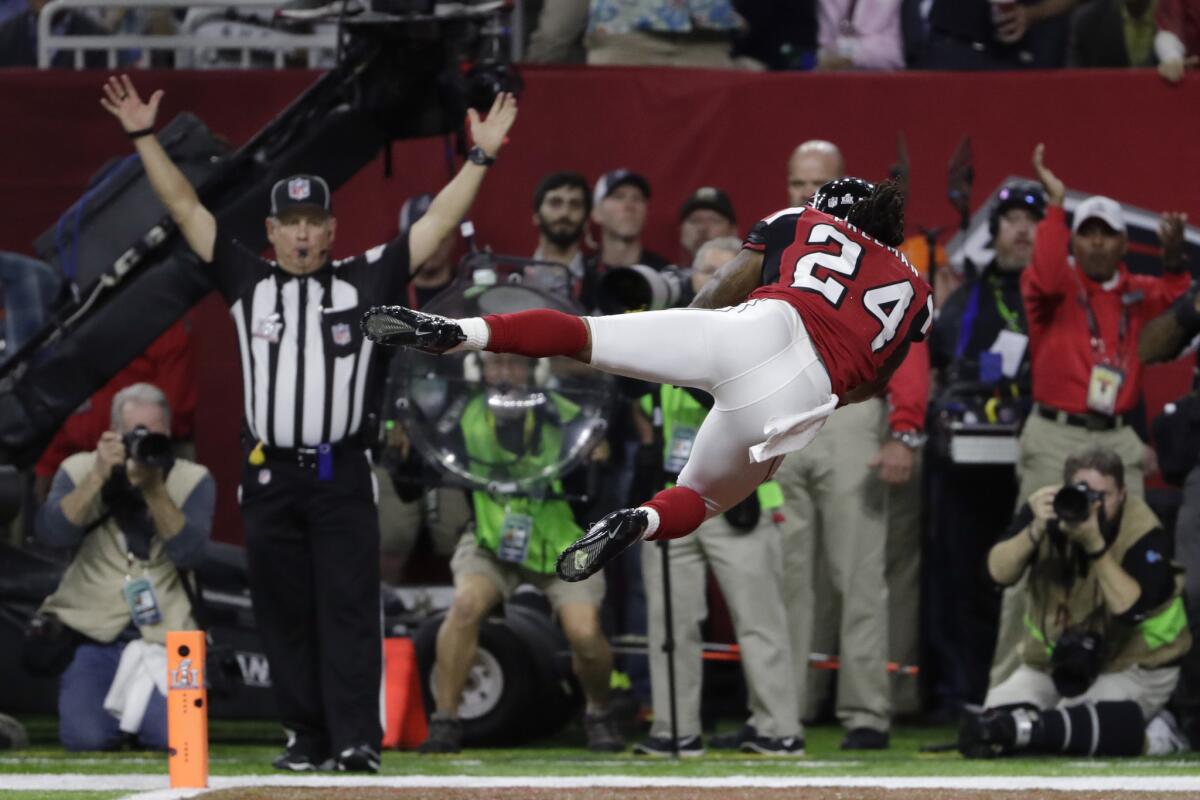
“A running back is going to be valuable for really about three to four years,” Dickerson said. “That’s when they’re the hottest. You get that first contract, you’re probably not going to see the second one.”
Of the NFL’s top 12 rushers in 2019, 11 were still on their rookie deals. Dallas’ Ezekiel Elliott was the lone exception. Seven of the 12 made less than $1 million in base salary.
Running back, like no other spot on a football field, belongs to the younger generation. When last season began, no one who would finish in the top 12 in rushing yards was older than 25.
“It’s the toughest position from a physical standpoint,” Hall of Famer Terrell Davis said. “It’s a difficult spot to be in because, as running backs, we’re grinders. And then, when it’s time to get paid, teams are reluctant. And I understand that.”
NFL season doesn’t start for another six months, but already the league has seen handful of quarterbacks changing teams.
Immediately after last season, Casserly said he identified only one team that needed a running back — Miami. The Dolphins this week agreed to terms with Jordan Howard on a two-year, $10-million deal.
So Gordon was looking for a payday in the most difficult of markets, one that barely existed. He remained available even after two players he shared the same backfield with in 2019 had secured new contracts.
Austin Ekeler, Gordon’s former backup, eaccepted a four-year, $24.5-million offer from the Chargers. Fullback Derek Watt is joining the Pittsburgh Steelers on a three-year, $9.75 million deal.
Davis, who starred with the Broncos, said he felt bad for what Gordon went through before landing in Denver.
“He sat out last year wanting that deal,” Davis said. “I think he’s still got game. I think he’s still one of the backs that you can kind of put up there.”
To illustrate how dramatically running backs have fallen in the pecking order, understand that Ekeler, with his new contract, moved into the top 10 among the highest paid players at the position, based on average annual salary.
“I look at some of these — I’m going to say it — bums at quarterbacks, they go get them $20 million?”
— Hall of Famer Eric Dickerson
This is a former undrafted free agent who only made the Chargers as a rookie because of his performance in the team’s final preseason game. When last season began, Ekeler still was answering questions about his viability as an NFL starter.
Tennessee’s Derrick Henry eventually will eclipse Ekeler on the pay scale. He has been franchise tagged, meaning he’s guaranteed a 2020 salary of at least $10.2 million.
Henry was the one who quite literally carried the Titans into the AFC title game two months ago, rushing 64 times for 377 yards in Tennessee’s first two playoff victories.
But, while Henry was a Heisman Trophy winner and a second-round pick, consider the running backs on the two teams that eventually reached Super Bowl LIV.
Kansas City had no player gain as many as 500 rushing yards during the regular season. The Chiefs were led by Damien Williams, who was undrafted and recently had his 2020 option picked up. He’ll make $2.3 million.
San Francisco reached Miami by using three backs — Raheem Mostert, Matt Breida and Tevin Coleman — each of whom carried at least 120 times for at least 500 yards.
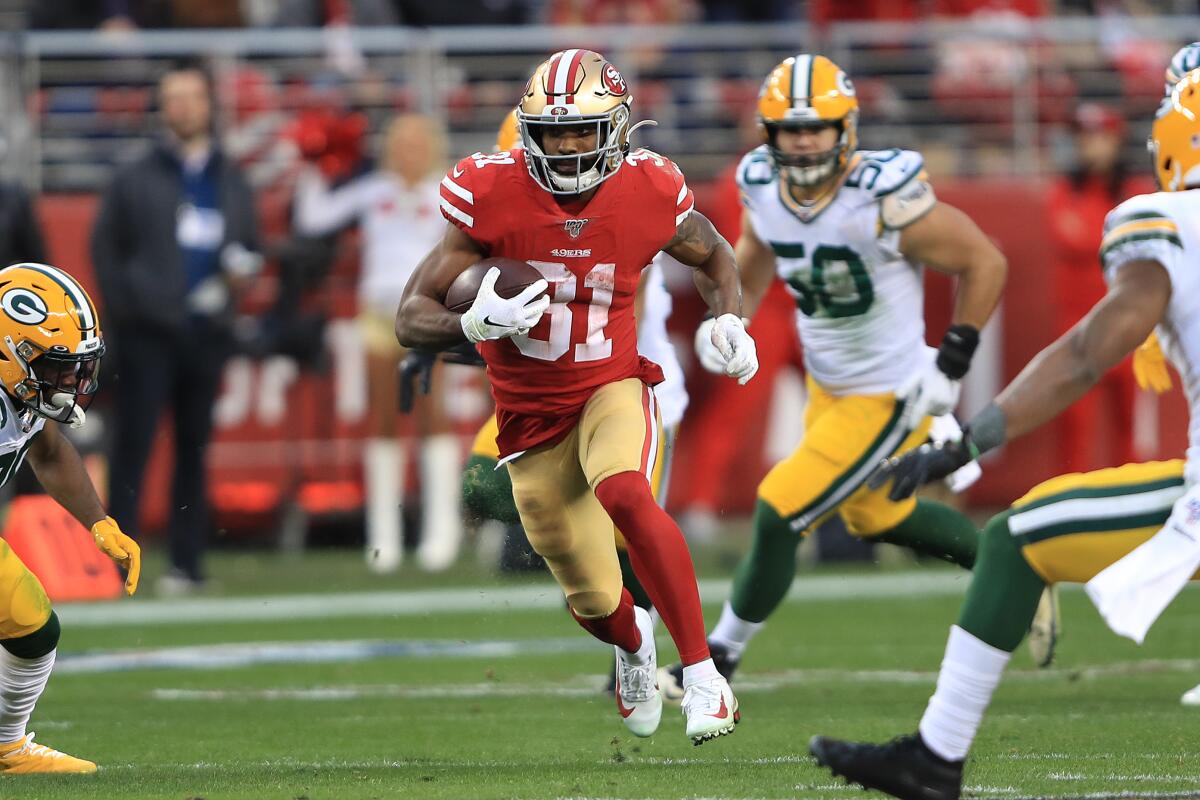
Mostert’s 137 rushes for 772 yards led the 49ers. He also was undrafted and has an upcoming base salary of $2.575 million.
“What we’ve seen in college is there are a lot of backs coming out who aren’t big backs, so to speak,” Casserly said. “They’re not going to be your full-time back. So you end up, by the nature of what’s given to you, having to use more than one.”
And you end up where the NFL is today, with some accomplished running backs still looking for jobs and some high-priced ones having to relocate.
All the while players at a few other positions — positions still regarded as too valuable to compromise — continue to cash in.
“I look at some of these — I’m going to say it — bums at quarterbacks, they go get them $20 million?” Dickerson said. “I’m like, ‘He’s a bum. He’s going to be a bum over there, too.’ That’s the frustrating part of it.”
Melvin Gordon understands. All running backs do.
Times staff writers Sam Farmer and Gary Klein contributed to this report.
More to Read
Go beyond the scoreboard
Get the latest on L.A.'s teams in the daily Sports Report newsletter.
You may occasionally receive promotional content from the Los Angeles Times.

